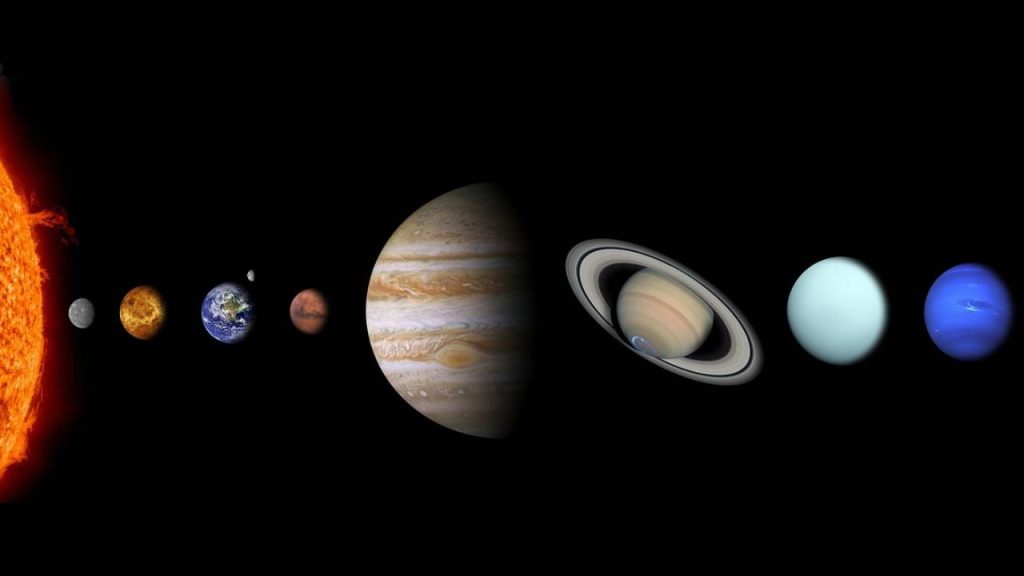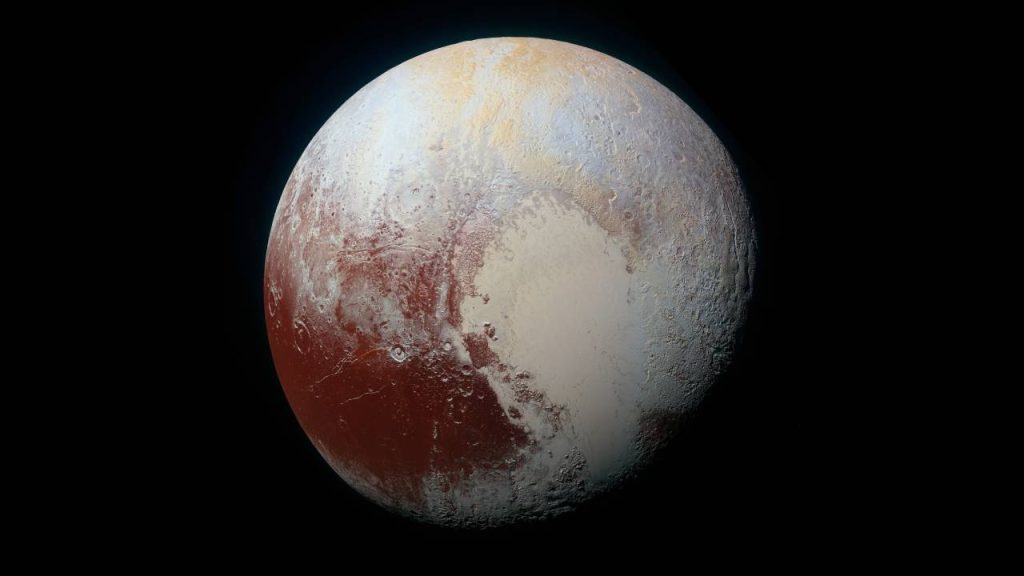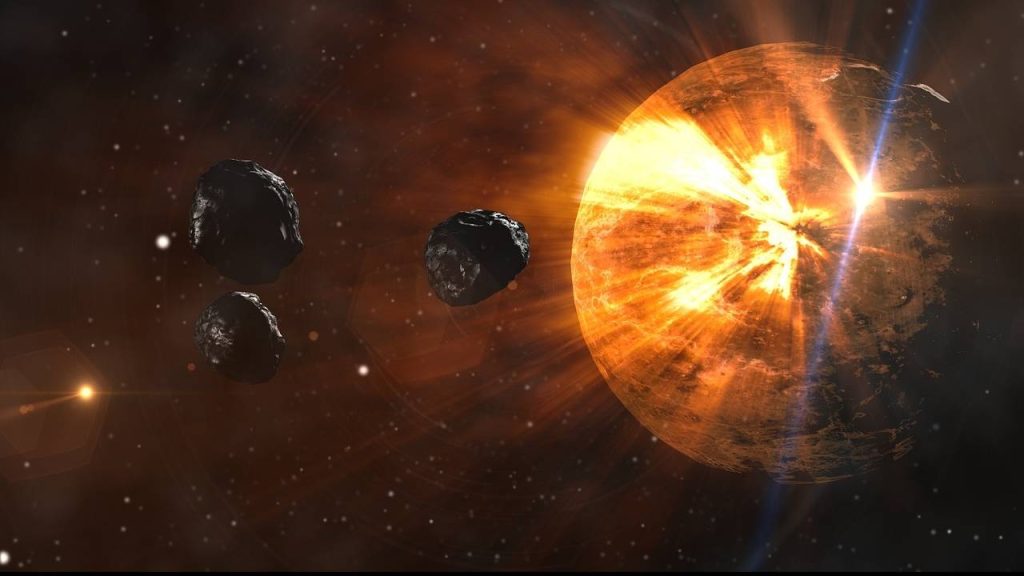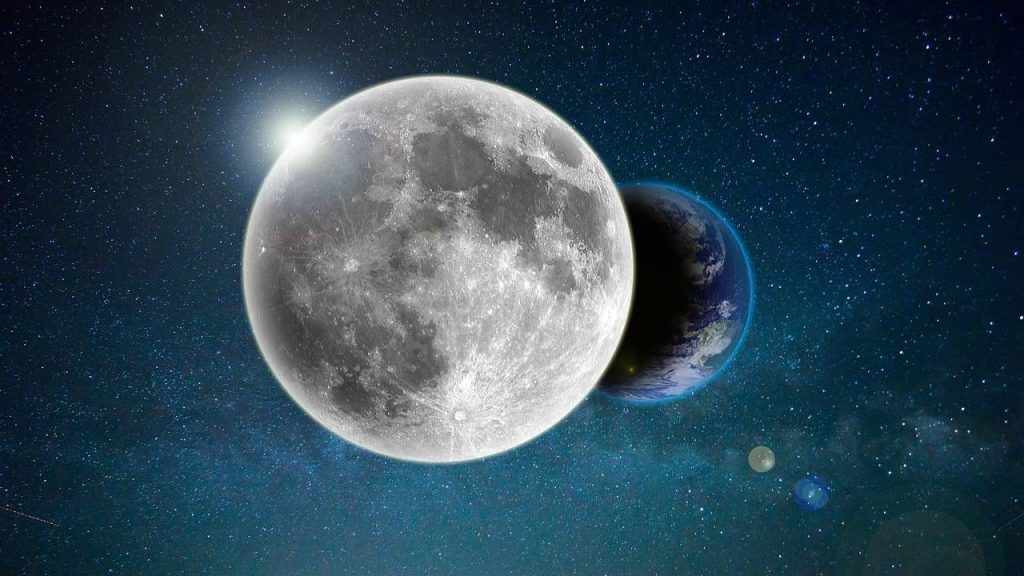In the vast expanse of our cosmic neighborhood, the number of planets orbiting our Sun has intrigued humanity for centuries. From classical counts to modern revelations, it leaves us wondering how many planets are there in our solar system.
Throughout history, our understanding of the solar system has evolved. Early astronomers counted various celestial objects as planets, like the Earth’s moon and even the Sun itself. However, it was not until modern times that we refined our criteria.
How Many Planets Are in Our Solar System?
There are currently eight recognized planets in our solar system. These are, in order of their distance from the Sun: Mercury, Venus, Earth, Mars, Jupiter, Saturn, Uranus, and Neptune.
However, it’s worth noting that there is ongoing scientific exploration and debate regarding potential additional planets or dwarf planets in the outer reaches of our solar system.

The Evolution of Our Solar System’s Understanding
The Role of Kepler, Galileo, and Newton
Kepler and Galileo are considered to be the pioneers in astronomy, whereas Newton, through his laws of physics, explained the movement of the planets. We can safely say that each one contributed a piece to the puzzle of our solar system.
Kepler’s laws helped us understand how planets move around the Sun. His most famous planetary law states that the planets orbit in ellipses, not in circles. Galileo’s telescope revealed hidden celestial secrets at the time, such as the Moon’s craters and mountains, Venus’s changing crescent phases, and the Milky Way.
Newton’s laws of gravity explain why the planets move the way they do. Because of gravity, all objects in the Universe pull on each other. His laws helped us understand why the planets move in orbits and why objects fall on Earth.
Criteria for planetary status
Defining what makes a planet is no easy task. The International Astronomical Union (IAU), a group of space-savvy folks, set the rules in 2006. To be considered a planet, an object must orbit the Sun, have a reasonably spherical shape (not too irregular), and maintain a clear path in its orbital neighborhood.
The Demotion of Pluto
Pluto’s discovery
Back in 1930, an astronomer named Clyde Tombaugh made an exciting cosmic find: Pluto. It was the ninth planet, a celestial newcomer that got everyone talking. For much of the 20th century, Pluto held the coveted position of the ninth planet in our solar system.
As our astronomical tools and knowledge grew more sophisticated, scientists began to scrutinize Pluto’s characteristics. Later, it lost its status as a planet after the scientists decided it did not fit the criteria to be called a planet.
Reasons for Reclassification
As the International Astronomical Union (IAU) redefined the criteria for classifying celestial bodies as planets in 2006, Pluto, unfortunately, didn’t meet the redefined criteria. Consequently, it was reclassified as a “dwarf planet.”
More specifically, Pluto stopped being a planet because it fell short of clearing the neighboring region of other objects, i.e., it didn’t meet one out of the three criteria that the International Astronomical Union (IAU) uses to define a planet.
This decision sparked debates and passionate discussions among astronomers and the public, highlighting the dynamic nature of scientific understanding. The new definition of a planet made us reconsider how many planets are in our solar system.

What are Dwarf Planets and Other Celestial Bodies
Beyond the classical planets, our solar system is a diverse cosmic playground teeming with celestial objects. Dwarf planets, such as Pluto, Eris, Haumea, Makemake, and Ceres, are intriguing members of this celestial family.
These objects, while not classified as full-fledged planets, exhibit distinct features and characteristics that make them fascinating subjects of study.
Additionally, our solar system hosts a plethora of other celestial bodies, including comets, asteroids, and moons. These objects play vital roles in our understanding of planetary formation and the dynamics of our cosmic neighborhood.
In the vast cosmic arena of our solar system, a diverse array of celestial objects captures our fascination:
Dwarf Planets
Like planets, dwarf planets orbit the Sun directly, rather than being natural satellites (moons) of other planets. Moreover, they have independent orbits and are large enough for their gravity to have shape them into nearly round objects which helps differentiate them from smaller asteroids and comets. However, the key criterion that differentiates dwarf planets from full-fledged planets is that dwarf planets share their orbital neighborhood with other objects.
Pluto, Eris, Haumea, Makemake, and Ceres may not carry the planetary title, but they have their own unique charm. These dwarf planets, scattered throughout the solar system, invite us to explore their distinctive traits and mysteries.
Comets
Comets are small celestial objects composed mainly of dust, ice, gas, and rocky material. They are often referred to as “dirty snowballs” because of their icy and dusty composition.
The comets, with their icy nuclei and luminous tails, provide invaluable windows into the early days of our solar system. Their journeys through space offer insights into the composition and dynamics of the distant past.
Asteroids
Asteroids are small, rocky objects that orbit the Sun, primarily found in the region between the orbits of Mars and Jupiter, known as the asteroid belt. They are remnants from the early solar system, composed mainly of rock and metal, and vary in size from just a few meters across to hundreds of kilometers in diameter.
The rocky wanderers that populate the solar system are primarily composed of minerals and metals, with rocky metallic compositions. Studying them provides a glimpse into the raw materials that shaped our celestial neighborhood.
Moons
The natural satellites of planets, like Earth’s moon, play an essential role in planetary processes. They influence tides, geology, and even potential habitats for life. Each moon offers a unique perspective on its host planet, enriching our understanding of planetary systems.

Ongoing Discoveries and Research
Are there undiscovered planets?
The ongoing research suggests the possibility of undiscovered planets lurking in the distant reaches of our cosmic neighborhood. One of the most intriguing hypotheses is the existence of “Planet Nine.” This hypothetical world, which has yet to be directly observed, is believed to orbit the Sun in the far outer regions of the solar system.
The search for Planet Nine is driven by a variety of observations and mathematical models. Anomalies in the orbits of distant Kuiper Belt objects, as well as computer simulations of the solar system’s dynamics, have led scientists to propose the existence of this elusive planet.
If confirmed, Planet Nine could be a massive, icy world, perhaps several times the size of Earth, exerting gravitational influence on objects in the outer solar system.
However, it’s important to note that the existence of Planet Nine remains a topic of ongoing debate and research. Astronomers are actively searching for this hidden world using advanced telescopes and computational methods, and the hunt for Planet Nine continues to captivate the imagination of scientists and space enthusiasts alike.
How Many Exoplanets Are There?
Beyond our solar system lies an expansive and diverse collection of stars, each potentially accompanied by its own retinue of planets. These planets orbit stars other than our Sun and are called exoplanets. The discovery of exoplanets has been a revolutionary development in astronomy, shedding light on the prevalence and diversity of planetary systems throughout the Universe.
As of the latest count, astronomers have identified thousands of exoplanets using a variety of methods.
The most common techniques include the transit method (detecting a planet as it passes in front of its host star, causing a temporary dimming of the star’s light). The radial velocity method (detecting a planet’s gravitational influence on its star, causing it to wobble) is also very effective.
Exoplanets come in an astonishing array of sizes, compositions, and orbital configurations. Some are rocky, like Earth, while others are gas giants like Jupiter. The study of exoplanets has provided insights into planetary formation, habitability, and the potential for life beyond our solar system.
Ongoing missions and advancements in technology continue to expand our understanding of exoplanets. Recent observatories, such as the James Webb Space Telescope (JWST), promise to revolutionize our ability to characterize the atmospheres and properties of distant exoplanets.
This will open new frontiers in the search for potentially habitable worlds and the exploration of the cosmos beyond our solar system.
The Role of Space Exploration
Space exploration has played a pivotal role in expanding our knowledge of the solar system. Through a series of pioneering missions, scientists have been able to observe, study, and collect data about celestial bodies, shedding light on the mysteries of our cosmic neighborhood.
Here, we delve into the remarkable contributions of space exploration and highlight key missions that have shaped our understanding of the solar system.
Contributions of space exploration
Space exploration has allowed us to:
- Conduct close-up observations of planets, moons, and asteroids.
- Study planetary atmospheres, geology, and surface features.
- Gather data on the composition and origins of celestial bodies.
- Investigate the potential for past or present extraterrestrial life.
- Explore the dynamics of planetary systems and their interactions.
Key missions
- Voyager Program
- Launched in 1977, the Voyager 1 and Voyager 2 spacecraft embarked on a grand tour of the solar system.
- Their missions included flybys of Jupiter, Saturn, Uranus, and Neptune, providing unprecedented images and data.
- Voyager 1 is now the farthest human-made object from Earth, venturing into interstellar space.
- New Horizons
- In 2006, NASA’s New Horizons spacecraft was launched with a specific mission: to study Pluto and the Kuiper Belt.
- In 2015, it conducted a historic flyby of Pluto, offering the first up-close images and data about this distant world.
- New Horizons continues to explore the Kuiper Belt, providing insights into the outer reaches of our solar system.
- Mars Rovers (e.g., Curiosity, Perseverance)
- NASA’s Mars rovers, including Curiosity and Perseverance, have been exploring the Red Planet’s surface.
- They’ve analyzed Martian soil, searched for signs of past life, and investigated the planet’s geology and climate.
- These missions are instrumental in preparing for potential human missions to Mars.
These missions represent just a fraction of the numerous space explorations that have contributed to our understanding of the solar system. They have not only provided invaluable scientific data but have also ignited the public’s fascination with space and the cosmos, inspiring generations of scientists, engineers, and space enthusiasts.
Planetary Moons
Moons, those enigmatic companions of planets, play a crucial and intriguing role in our solar system. These celestial bodies, often overlooked in favor of their more prominent planetary counterparts, possess their own unique characteristics and significance. In this section, we delve into the world of planetary moons, exploring their roles, and significance, and highlighting some of the most captivating ones, including Earth’s Moon, Europa, and Titan.
The role and significance of moons
Gravitational stabilizers
Moons help stabilize the orbits of their parent planets, preventing excessive wobbling and maintaining their axial stability. This ensures a stable climate over geological timescales.
Tidal forces
Moons exert tidal forces on their host planets, causing phenomena like ocean tides on Earth and geological activity on moons like Io, the third largest of Jupiter’s moons, where intense volcanic eruptions occur.
Scientific laboratories
Moons offer unique environments for scientific study. They provide insights into planetary geology, atmospheres, and the potential for life beyond Earth.
Intriguing Moons in Our Solar System
Earth’s Moon (Luna)
Earth’s only natural satellite has been a source of fascination and inspiration for millennia. Earth’s Moon, or so-called Luna in various languages, is a celestial body that is believed to have formed approximately 4.5 billion years ago. The moon orbits Earth, and because of it, it goes through a series of phases due to the changing relative positions of the Moon, Earth, and the Sun.
It played a crucial role in the development of lunar science, space exploration, and our understanding of the moon’s history and geology.
Europa (Jupiter’s Moon)
Europa, one of Jupiter’s Galilean moons, is covered in a layer of ice, beneath which lies a global subsurface ocean. Europa is of particular interest to scientists and astronomers due to its unique characteristics and the possibility of hosting conditions that could be conducive to life.
It is a prime target in the search for extraterrestrial life due to the possibility of liquid water and geothermal activity beneath its icy crust.
A fun fact worth mentioning here is that NASA’s Europa Clipper mission, planned for launch in the 2020s, aims to study Europa’s ice shell and subsurface ocean, assess the moon’s potential habitability, and search for signs of life. Just imagine what would happen if there’s another planet with signs of life.
Titan (Saturn’s Moon)
Titan, Saturn’s largest moon, boasts a dense atmosphere and unique hydrocarbon lakes and rivers. It is the largest moon of Saturn and the second-largest moon in the entire solar system, after Ganymede, a moon of Jupiter.
Titan’s unique characteristics, including its thick atmosphere, liquid methane lakes, and potential subsurface oceans, make it a focus of interest due to its Earth-like features and the possibility of prebiotic chemistry occurring on its surface.

Frequently Asked Questions
Are there any undiscovered planets beyond the Kuiper Belt?
Yes, the possibility of undiscovered planets beyond the Kuiper Belt has intrigued astronomers. Ongoing research and mathematical models have suggested the existence of distant, as-yet-unseen planets.
One such hypothesis is “Planet Nine,” which, if confirmed, could be a substantial addition to our solar system. However, direct observations are still pending, making this an active area of study.
How many dwarf planets are currently recognized in our solar system?
As of our latest understanding, there are five recognized dwarf planets in our solar system: Pluto, Eris, Haumea, Makemake, and Ceres.
These celestial objects, though not classified as full-fledged planets, possess unique characteristics that make them objects of scientific interest. It’s worth noting that ongoing research may reveal more members of this fascinating category.
Why was Pluto demoted from being considered the ninth planet in our solar system?
In 2006, the International Astronomical Union (IAU) revised planet classification criteria. Unfortunately, Pluto met all the criteria for what defines a full-sized planet except one — it has not cleared its neighboring region of other objects.
This decision led to debates. The evolving scientific understanding led to Pluto being reclassified as a “dwarf planet.
Conclusion
Currently, we have eight recognized planets in our solar system. Yet, it’s a cosmic playground filled with diverse celestial wonders — dwarf planets like Pluto, comets, asteroids, and moons – all contributing to the rich tapestry of our cosmic story.
The quest for “Planet Nine” and the study of exoplanets continue to expand our cosmic horizons. Space exploration, driven by missions like Voyager, New Horizons, and Mars rovers, has been our guiding light, illuminating the mysteries of distant worlds.
As we cast our eyes skyward, we recognize the cosmos as an ever-evolving canvas of celestial marvels. The question of how many planets are in our solar system isn’t just about numbers; it signifies an enduring journey of cosmic understanding. Let our exploration be an unceasing quest to unravel the cosmic secrets of our celestial home.
